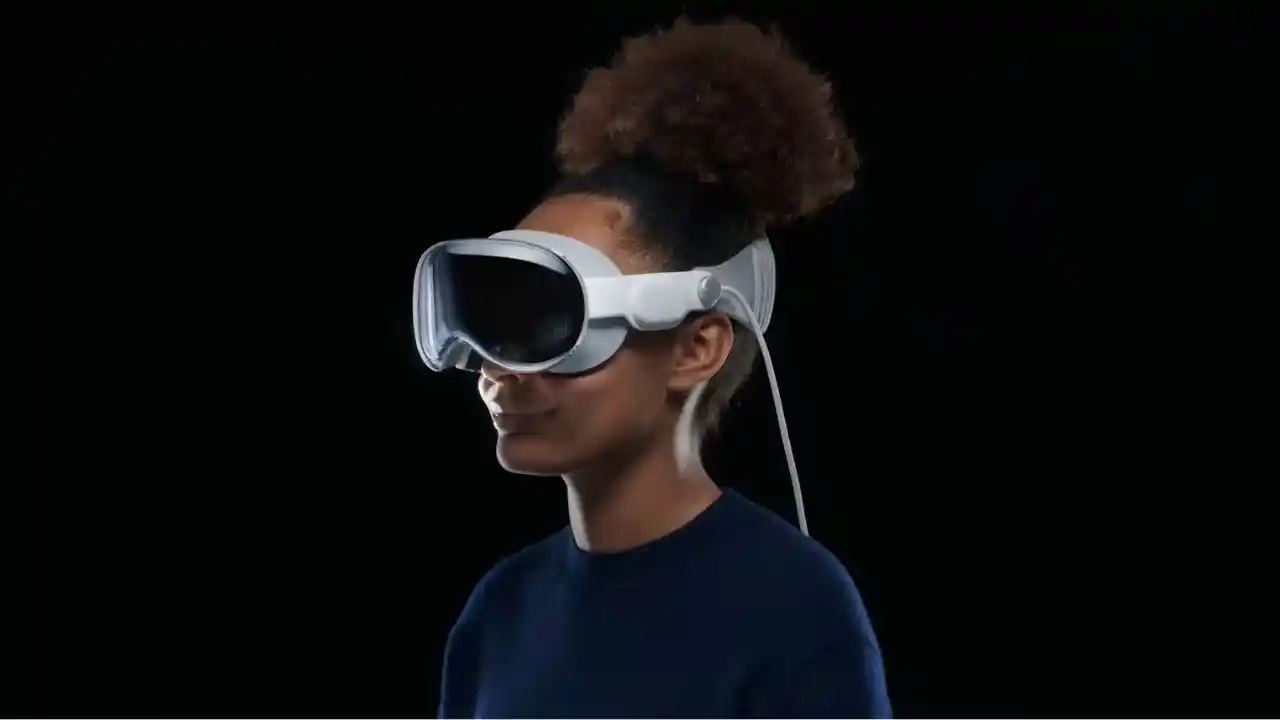When Apple unveiled the original Vision Pro headset, the world didn’t quite know how to react. Was it an overpriced experiment or the next evolution of computing? The $3,499 price tag raised eyebrows, but the capabilities were undeniable. Spatial video, eye tracking, multitasking in 3D environments—it was Apple’s first true step into the post-screen era.
Now, just months after the first wave of Vision Pro users began exploring the spatial computing frontier, leaks are pointing to a new model already in development: the Apple Vision Pro 2.
Slated for a potential 2026 release, the Vision Pro 2 isn’t just a refresh. It’s rumored to be a complete rethink, aimed at making spatial computing something the average user might actually consider adopting.
From slimmer hardware and improved battery life to software upgrades that hint at full mixed reality capabilities, the second-generation Vision Pro might be Apple’s real play to own the next computing platform.
Let’s break down what’s leaked so far—and why the Vision Pro 2 could be the device that truly changes everything.
A New Form Factor: Lighter, Sleeker, More Wearable
One of the biggest criticisms of the first-generation Vision Pro was its bulk. While the immersive experience was praised, the headset was undeniably heavy. Users reported neck fatigue after long sessions, and the external battery pack, while clever, wasn’t exactly elegant.
According to multiple supply chain insiders and CAD renders that have quietly surfaced, Apple’s second-gen headset will be significantly lighter. This is due in part to:
- A custom-built microOLED panel that’s thinner and more power-efficient
- Redesigned head straps that better distribute weight
- A new carbon fiber and magnesium alloy chassis that cuts down on unnecessary bulk
Apple seems to be betting big on comfort, which would suggest they’re pushing for longer daily usage—perhaps even productivity-first experiences that replace your MacBook entirely.
M2 Ultra or Something New Entirely?
The first Vision Pro used Apple’s M2 chip alongside an R1 co-processor. That’s already more processing power than most laptops carry. But with the Vision Pro 2, Apple might be taking things further.
Leaked internal documents reference a new processor family internally codenamed “Poseidon”, believed to be a more AI-optimized variant of the M3 or even a custom silicon designed specifically for spatial workloads.
This chip is rumored to offer:
- Real-time spatial awareness using advanced neural processing
- Predictive rendering to reduce latency in immersive apps
- On-device AI for gesture tracking, voice commands, and environmental mapping
If this pans out, Vision Pro 2 won’t just display 3D apps—it will understand your behavior inside them.
True Mixed Reality: Not Just AR and VR
The original Vision Pro blurred the lines between augmented and virtual reality, but its use cases still leaned more toward media consumption and creative workflows.
With the second version, Apple is reportedly aiming for fully interactive mixed reality, where real-world objects and digital overlays blend seamlessly.
Insiders claim Apple is testing:
- Real-time object recognition that lets the headset identify physical tools, furniture, and even pets
- Shared MR workspaces, allowing multiple Vision users to collaborate in the same physical space with virtual overlays
- A new gesture language that expands beyond simple pinches and swipes, possibly even incorporating eye-only controls with no hand gestures needed
The focus seems to be shifting from “watching in 3D” to “working, communicating, and creating in 3D.”
Spatial Facetime, 2.0
Vision Pro’s spatial Facetime was a wild idea—creating realistic avatars based on scans of your face. But the results were… polarizing. Uncanny, slightly robotic, and too dependent on ideal lighting conditions.
Vision Pro 2 is rumored to include a new dual-sensor depth camera system, allowing the headset to generate real-time facial reconstructions with far more fidelity.
The goal? No more avatars. Just your face. In real-time. In 3D.
Apple is reportedly integrating this into iMessage and FaceTime for Vision OS 2, creating a whole new category of “presence-based communication.”
New App Categories: Fitness, Productivity, and AI Assistants
While media and creative tools were at the heart of Vision Pro’s first release, the Vision Pro 2 is expected to expand into new lifestyle categories:
1. Fitness & Health:
A new set of fitness-focused spatial apps is reportedly in the works, including AR-guided workouts that overlay trainers and posture corrections in your room. Rumors also suggest Apple is exploring motion-based rehabilitation apps for physical therapy.
2. Productivity:
Vision Pro 2 will likely include expanded support for traditional office apps like Pages, Numbers, and Keynote—but reimagined in 3D. A new “Focus Room” mode will allow users to block out physical distractions and work inside a clean, distraction-free digital environment with real-time widgets, calendars, and browser tabs.
3. On-device AI Assistant:
There are credible leaks suggesting Apple is testing a completely new version of Siri, rebuilt from the ground up using large language models, and capable of spatial interactions. Imagine pointing at your calendar and saying, “Reschedule everything after 3 PM,” and watching it update live in 3D.
This could be Siri’s long-overdue redemption.
Price Drop Incoming?
The biggest barrier to adoption for the first Vision Pro was the price. While early adopters swallowed the $3,499 cost, mainstream users will not.
Several leaks suggest Apple is working on two Vision models for 2026:
- The Vision Pro 2 for professionals and enthusiasts
- A more affordable Vision (no “Pro”) for casual consumers
This cheaper version may remove features like eye tracking or the external screen, but still offer core spatial computing experiences for under $1,500.
If Apple pulls this off, the Vision lineup might finally leave the niche corner and enter the daily lives of creators, remote workers, and casual tech users.
Vision OS 2: Spatial Computing Gets a Real Operating System
A second-gen headset wouldn’t mean much without major software evolution. Apple is reportedly working on Vision OS 2.0, a major update expected to roll out alongside Vision Pro 2.
Vision OS 2 could include:
- Support for third-party AR engines, including Unity and Unreal XR
- Custom spatial widgets you can pin in real-world locations
- A new multi-device spatial sync feature—where your iPhone, Mac, and iPad can project their screens into your Vision environment in real time
- AI-generated app layouts, adapting your workspace automatically depending on time of day or task
In short: Vision OS 2 aims to turn the headset into your full digital hub—not just a side device.
Final Thoughts: Is Vision Pro 2 the iPhone Moment for Spatial Computing?
The original Vision Pro was Apple’s moonshot—a bold, expensive, daring leap into a new world. Vision Pro 2 feels like the moment it starts to land.
Lighter, smarter, faster, and more usable by the average person, this next headset could do for spatial computing what the iPhone did for mobile.
If Apple nails the price, power, and purpose, Vision Pro 2 could finally move the dream of spatial interfaces from concept videos to coffee shops, classrooms, and conference calls.
2026 might just be the year we stop thinking of “screens” as the way we use computers. Because when computing surrounds you—when it listens, responds, and blends into your reality—you’re no longer using a device.
You’re wearing the future.

